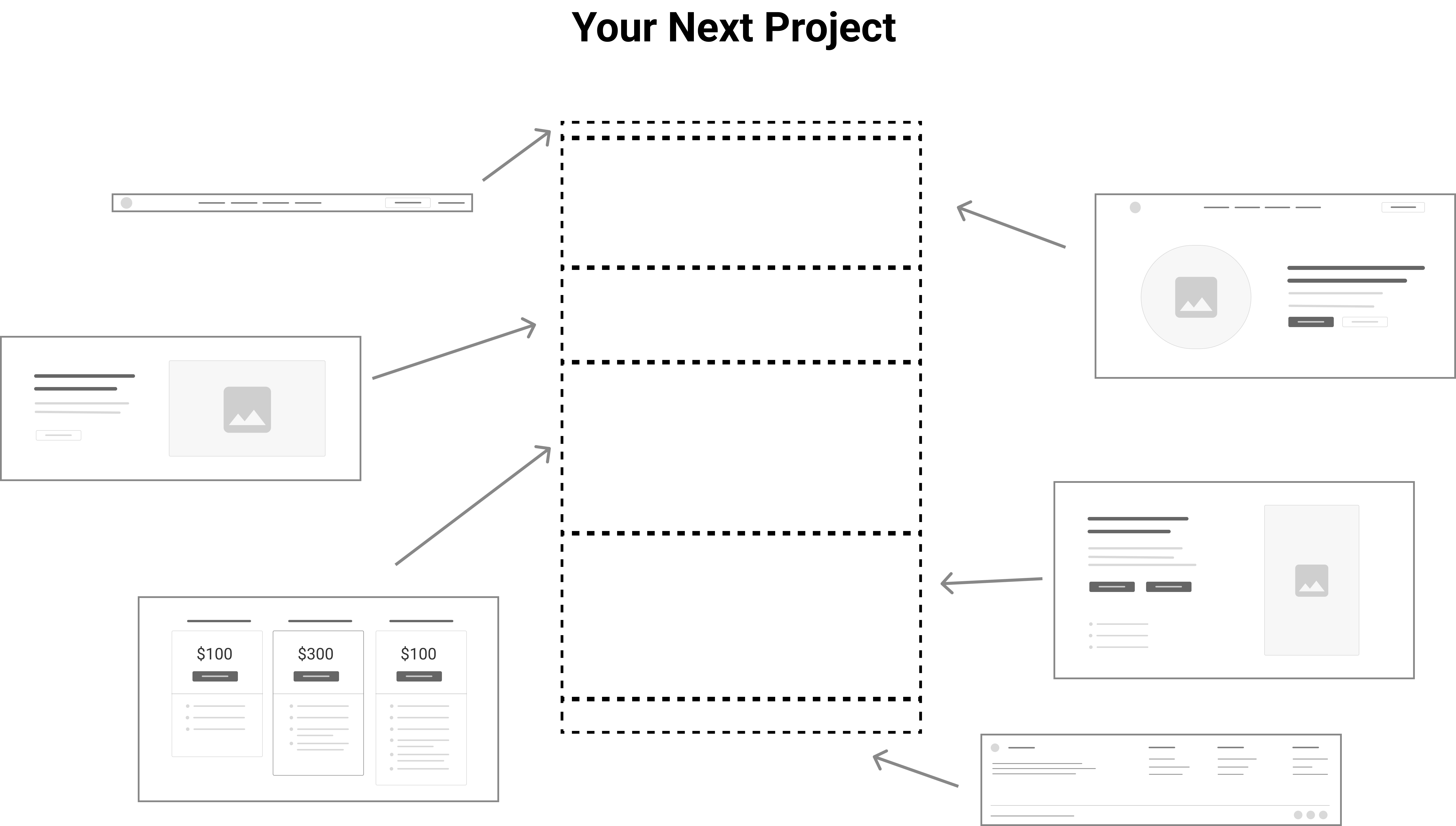Why you should use Wireframes
Wireframes are crucial in project development, offering a clear, simplistic blueprint that focuses on layout and functionality, fostering creativity and innovation. They serve as a foundational tool for collaboration, exploration, and user-centered design, inspiring designers to develop intuitive and engaging digital projects.
Posted by

Introduction
In the dynamic world of design and development, wireframes stand as foundational tools, pivotal in shaping the early stages of project development. But why exactly are wireframes so crucial, and how do they serve as sources of inspiration for projects? In this blog post, we'll delve into the world of wireframes, exploring their essential role in project planning and how they can spark creativity and innovation.
What are Wireframes?
Wireframes are simplistic, schematic drawings used to map out the basic structure and functionality of a website, app, or digital project. Think of them as the blueprints of the digital world. Typically devoid of intricate design elements like colors or high-fidelity graphics, wireframes focus on layout, content placement, and user interaction pathways.
The Importance of Wireframes for Inspiration
Clarity and Focus
Wireframes bring clarity to the project vision. They strip down a concept to its core, allowing designers and stakeholders to focus on functionality and user experience without getting distracted by design details. This clarity can be incredibly inspiring, as it presents a straightforward canvas onto which creative ideas can be projected.
Facilitating Collaboration
Wireframes are excellent tools for collaboration. They provide a visual language that everyone, from designers to developers to clients, can understand. This shared understanding fosters a collaborative environment where ideas can be easily communicated, critiqued, and refined.
User-Centered Design
Inspiration often comes from focusing on the end-user. Wireframes help keep the user’s needs at the forefront of the design process. By mapping out user journeys and interaction points, wireframes ensure that the project remains user-centric, which is a key source of inspiration for creating intuitive and engaging designs.
Problem-Solving
Wireframes are problem-solving tools. They help identify usability issues and navigational challenges early in the project lifecycle. Addressing these problems at the wireframe stage can lead to innovative design solutions and a better overall user experience.
Setting the Foundation for Creativity
By establishing a solid structural base, wireframes free up designers to be more creative with the visual and interactive aspects of the project. Knowing the framework is in place, designers can push the boundaries of aesthetics and innovation without worrying about foundational issues.
Wireframe Examples as Inspirational Tools
Hosting a page of wireframe examples is not just about showcasing work; it’s about inspiring others. Each wireframe tells a story of problem-solving, user-centric design, and creative exploration. By studying these examples, designers and project teams can gain insights into different approaches and methodologies, sparking new ideas for their own projects.
Conclusion
Wireframes are much more than mere sketches; they are the stepping stones to innovative, user-focused design. By providing clarity, fostering collaboration, encouraging exploration, focusing on the user, solving problems, and setting a foundation for creativity, wireframes serve as invaluable sources of inspiration for any digital project. Whether you are a seasoned designer or just starting, incorporating wireframes into your workflow can open up a world of creative possibilities.